AMD Teases Radeon RX 480: Launching June 29th For $199
by Ryan Smith on May 31, 2016 10:00 PM EST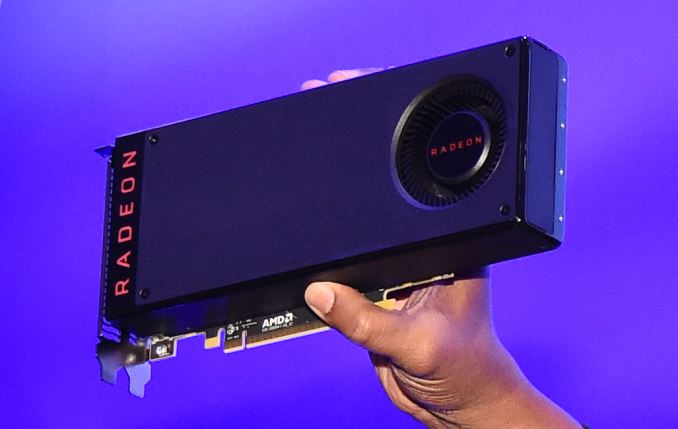
Kicking off at this moment is AMD’s Computex 2016 keynote. The company has multiple announcements scheduled this evening, but we’re going to jump right into an area that has been of extreme interest for many of our readers: GPUs.
Ahead of this evening’s event, AMD sent out an email to the press teasing the first of their discrete Polaris architecture based cards. Called the Radeon RX 480, AMD has unveiled much of the product’s specifications, but also its price and availability. When the card hits the streets on June 29th, it will be starting at the crucial mainstream battleground price point of $199.
| AMD Radeon GPU Specification Comparison | ||||||
| AMD Radeon RX 480 | AMD Radeon R9 390X | AMD Radeon R9 390 | AMD Radeon R9 380 | |||
| Stream Processors | 2304 (36 CUs) |
2816 (44 CUs) |
2560 (40 CUs) |
1792 (28 CUs) |
||
| Texture Units | (Many) | 176 | 160 | 112 | ||
| ROPs | (A Positive Integer) | 64 | 64 | 32 | ||
| TFLOPs (FMA) | >5 TFLOPs | 5.9 TFLOPs | 5.1 TFLOPs | 3.5 TFLOPs | ||
| Boost Clock | >1.08GHz | 1050MHz | 1000MHz | 970MHz | ||
| Memory Clock | 8Gbps GDDR5 | 5Gbps GDDR5 | 5Gbps GDDR5 | 5.5Gbps GDDR5 | ||
| Memory Bus Width | 256-bit | 512-bit | 512-bit | 256-bit | ||
| VRAM | 4GB/8GB | 8GB | 8GB | 2GB | ||
| Transistor Count | ? | 6.2B | 6.2B | 5.0B | ||
| Typical Board Power | 150W | 275W | 275W | 190W | ||
| Manufacturing Process | GloFo 14nm FinFET | TSMC 28nm | TSMC 28nm | TSMC 28nm | ||
| Architecture | GCN 4 | GCN 1.1 | GCN 1.1 | GCN 1.2 | ||
| GPU | Polaris 10? | Hawaii | Hawaii | Tonga | ||
| Launch Date | 06/29/16 | 06/18/15 | 06/18/15 | 06/18/15 | ||
| Launch Price | $199 | $429 | $329 | $199 | ||
First off, the RX 480 will include 36 CUs. If we assume 64 stream processors to a CU – the GCN standard – then this brings us to 2304 SPs. AMD has not named the specific Polaris GPU being used here, but given the CU count I believe it’s reasonable to assume that this is a Polaris 10 SKU, as I’ve already seen Polaris 11 and it’s a very small chip better suited for notebooks.
AMD also revealed that the card would offer over 5 TFLOPs of compute performance. Given what we know about the CU count, this allows us to estimate the GPU clockspeed. This puts the lower bound of the GPU clockspeed at 1.08GHz and an upper bound (6 TFLOPs) at 1.3GHz, which would be in the range of 10-30% higher clocked than comparable Radeon 300 series cards.
In terms of raw numbers this puts the RX 480 just shy of the current Radeon R9 390. However it also doesn’t take into account the fact that one of the major focuses for Polaris will be in improving architectural efficiency. I would certainly expect that even at the lower end of clockspeed estimates, RX 480 could pull ahead of the R9 390, in which case we’re looking at a part that would deliver performance between the R9 390 and R9 390X, with final clockspeeds and architectural efficiency settling just how close to R9 390X the new card gets.
On the memory front the card is equipped with 8Gbps GDDR5, running along a 256-bit memory bus. This is the typical bus width for AMD x80-series cards, and the high clocked 8Gbps GDDR5 means that we’re looking at a total of 256GB/sec of memory bandwidth to feed the RX 480’s GPU. AMD’s partners will be offering both 4GB and 8GB cards, and for the purposes of this teaser I assume that pricing information will be for the 4GB card, with 8GB serving as a premium option.
Finally, AMD has also revealed the TDP for the RX 480, stating that it will be a 150W card. As Polaris is built on 14nm FinFET, we’re seeing first-hand the benefits of finally making the long-awaited jump off of 28nm, as this means we’re looking at Radeon R9 390 series performance in a card that, on paper, consumes only a bit more than half the power. This also puts the RX 480 right in the sweet spot for mainstream cards, as 150W has traditionally struck a good balance between performance and power consumption that allows for a fast card that doesn’t require aggressive cooling, and is more compatible with OEM computer vendor case & cooling designs.
Cementing its place as a mainstream card, the RX 480 pricing will start at $199. This is an aggressive and heavily fought over price point that has traditionally defined the mainstream segment, attracting buyers who want great 1080p gaming performance that sub-$150 value cards can’t offer, without moving up to more expensive (and power hungry) $300+ cards. In this sense the RX 480 is a direct replacement for the R9 380, AMD’s Tonga-based card that hit the market roughly a year ago at the same price. Going by the raw numbers alone, RX 480 would be 40% (or more) faster than the R9 380.
Meanwhile I won’t speculate too much on the competitive market from a teaser, but it’s worth noting that this is nearly half the price of NVIDIA’s currently cheapest Pascal card, the GeForce GTX 1070. Interestingly both cards have the same 150W TDP, but looking at the throughput figures it does not look like RX 480 is meant to offer quite as high performance as NVIDIA’s card.
Moving on, along with teasing the RX 480’s specifications, AMD’s teaser also laid out their marketing plans for the card. We’re previously talked about how both Oculus and Valve/HTC were encouraging developers to treat VR like a fixed platform, and setting minimum hardware specifications to go along with that. On the AMD side those specifications called for a Radeon R9 290, which the RX 480 should be able to beat.
As a result AMD is planning on heavily promoting the VR aspects of the RX 480, as it brings the necessary performance down from a 250W, $300+ card to a 150W, $200 card. In fact AMD is claiming that VR performance will be closer to $500 video cards, in which case we’d be looking at performance closer to the Radeon R9 Nano, a Fiji based card.
With all of that said, the video card is just one component in the total price of a VR system – you still need the headset – but on the PC side it has also been the most expensive component. Consequently, AMD sees cheaper video cards that offer good VR performance as being important to bringing down the total price of a VR-ready system, and will be promoting the RX 480 as the prescription for entry-level VR needs. From a business perspective, AMD is ultimately expecting VR to be a fast-growing market, so the company wants to make sure they don’t miss out and have more VR-capable cards on the market as quickly as they can.
Along those lines, AMD’s release also makes note that at least one model will be “both HTC Vive Ready and Oculus Rift certified,” though no further details are being offered at this time. Whether this is just a certification matter or if there’s going to be something special about this model (e.g. connectors) is open to speculation.
Finally, now that they’ve revealed the price and much of the specifications of their first Polaris card, AMD is also releasing more details on their overall development and market positioning strategy with Polaris. As AMD has hinted at in the past, Polaris is being specifically developed for and aimed at the mainstream market. AMD wants to recapture lost market share – especially in laptops – and the large mainstream market is seen as the best way to do that. AMD is calling this their “water drop” strategy, and I expect we’ll hear a bit more about it tonight, including the meaning behind the name.
And with all of that said, it looks like we’re going to have a lot of AMD to talk about on June 29th. So until they, stay tuned.
Above: AMD SVP & Chief Architect Raja Koduri, Who Is Very Happy That Polaris Is About To Launch


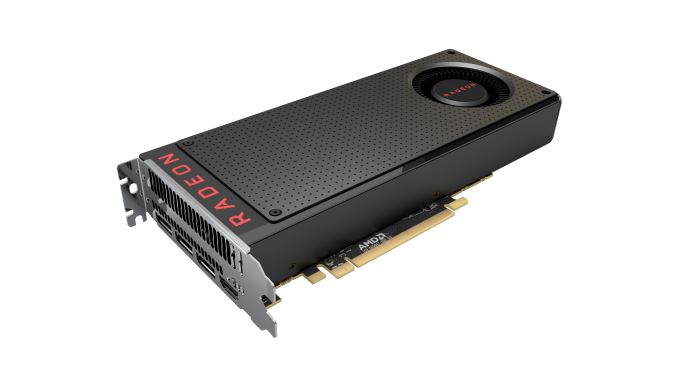

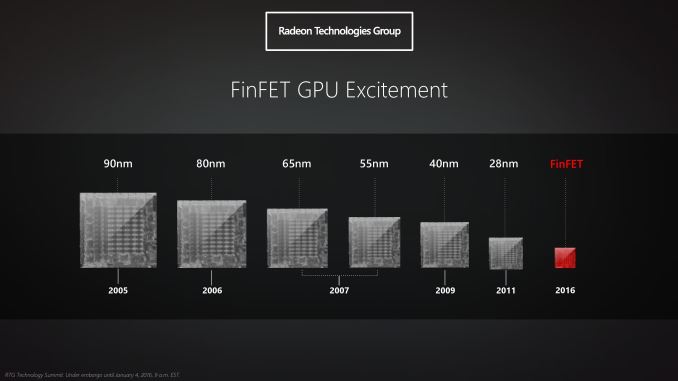
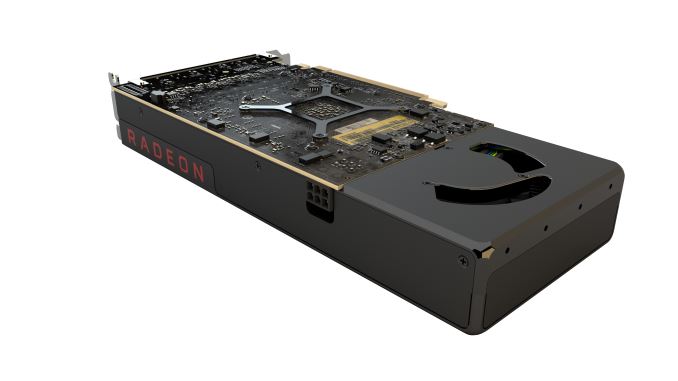




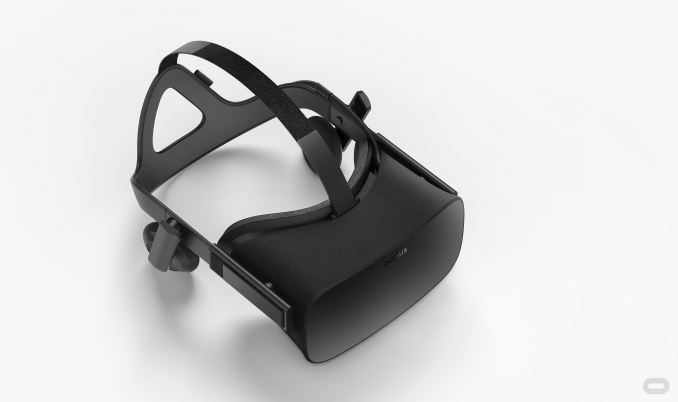









377 Comments
View All Comments
Joseph_Crox - Wednesday, June 1, 2016 - link
Here is a paragraph of ArsTechnica article: http://arstechnica.com/gadgets/2016/05/nvidia-gtx-..."Three-way SLI? You'll need a code for that
For even more performance, there's SLI. Those hoping that Nvidia's rapidly ageing SLI technology for linking two or more graphics card together would die out with Pascal will be disappointed—but, on the flip side, at least there are a few improvements.
For starters there's a new jaunty, high-bandwidth SLI bridge—or rather, there are three of them depending on your motherboard spacing. They are designed to link just two GTX 1080s together at a higher 650MHz speed (versus 400MHz) by using the second SLI connector traditionally reserved for three- or four-way SLI configurations. Nvidia claims that the new bridge results in less stuttering, although without a bridge or second 1080 to test, we'll just have to take Nvidia's word for it for now.
An odd side effect of the move is that, for the first time, Nvidia is officially recommending users go with a two-way SLI configuration. Those running 4K or monitor surround should use a HB Bridge. SLI has never scaled all that well past two cards—and four-card solutions are pretty much just for show in games—so this isn't all that surprising."
What is you want to buy 3 GTX 1070 and you couldn't work with that. But you can run 4 RX 480 and has all the power of crossfire and asynchronous computing (i.e. GCN 4.0). Which GPU will worth something in 5 years?
fanofanand - Wednesday, June 1, 2016 - link
How many people do you suppose are going to run 4 x RX 480? I understand what the article is saying, but I have never heard of anyone going tri or quad sli with midrange cards.LuxZg - Wednesday, June 1, 2016 - link
So it will have DisplayPort 1.4 after allajlueke - Wednesday, June 1, 2016 - link
This is really an exciting time. If AMDs promises hold, and they really can deliver R9 390X range performance at 150W for $199, that is a great accomplishment. It gives me hope that the APU era will finally deliver on some of it's promises.A Zen APU that can game acceptably at 1080p in a small ITX box like a NUC. With NVMe drives available, you don't need to waste space on drive bays, you can stick those in your NAS. But the APUs to date have always fallen a little short. If Polaris is what they claim it is from a performance and efficiency standpoint, and Zen is as well, I think we'll finally get the APU offerings that make low/mid range obsolete and consoles as well. Discrete video card gaming will then be relegated to VR and 4K+ setups for those who really want to spend the money and push technology to the bleeding edge.
However, even in that space the future looks bright as Vega is coming by years end, and NVidia is moving to HBM2 by early next year. Imagine designing a VR box with an Nvidia based HBM2 board. Can they get Pascal into a board the size of the Fury Nano? Or smaller? It's so energy efficient already, I'm betting they can.
spaceholder - Wednesday, June 1, 2016 - link
I noticed in the pictures connectivity is all HDMI and Displayport. As DVI-D is the only way to get 144hz 1080p I hope the production cards have a port. Otherwise the hardcore FPS players will suffer.JoeyJoJo123 - Wednesday, June 1, 2016 - link
>As DVI-D is the only way to get 144hz 1080pOh... The absolutely wrong and misinformed on the internet...
Oh, by the way, you're wrong. HDMI 2.0 and DisplayPort 1.4 can carry plenty more bandwidth than DVI-D and are more than capable of 144hz at 1080p, and even more.
mdriftmeyer - Wednesday, June 1, 2016 - link
Not to mention are HDR standards compliant.http://www.vesa.org/featured-articles/vesa-publish...
spaceholder - Thursday, June 2, 2016 - link
Most google searches (and redditors) disagree: https://www.reddit.com/r/pcmasterrace/comments/2hc...Maybe the latest and greatest HDMI supports it, but most video cards, GPU's and monitors from more than a year ago dont. Unless you want to game at 720p.
As I said - 144hz @ 1080p + freesync isnt going to happen over HDMI. Displayport maybe, my GPU doesnt have one though =/
JoeyJoJo123 - Thursday, June 2, 2016 - link
Did you read?HDMI 2.0, not 1.4. TWO POINT ZERO.
Valantar - Saturday, June 4, 2016 - link
Both HDMI 2.0 and DP 1.3 (not to mention 1.4) have higher bandwidth than DL-DVI. Also, there are adapters aplenty for DP-whatever you want. Have an old 144Hz DVI monitor, want a new GPU? Get an active DP-DVI adapter.I for one applaud AMD for pushing out obsolete standards. The sooner, the better. We're still not rid of VGA, after all.